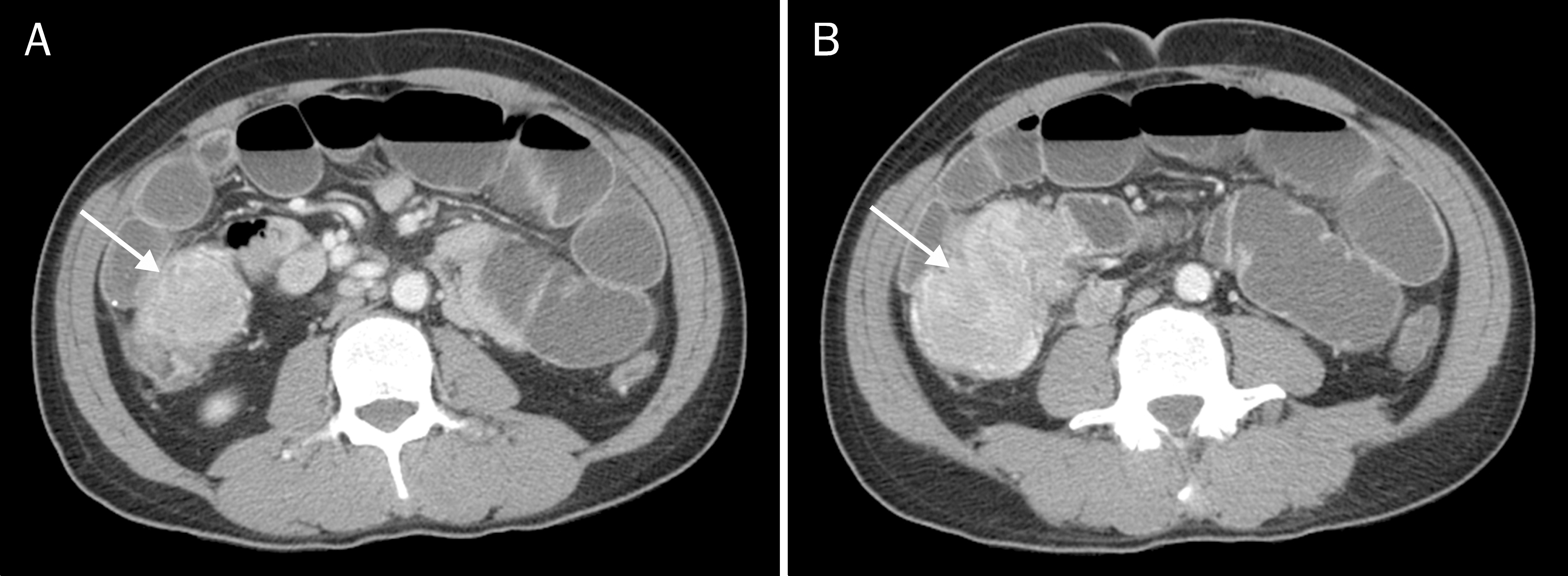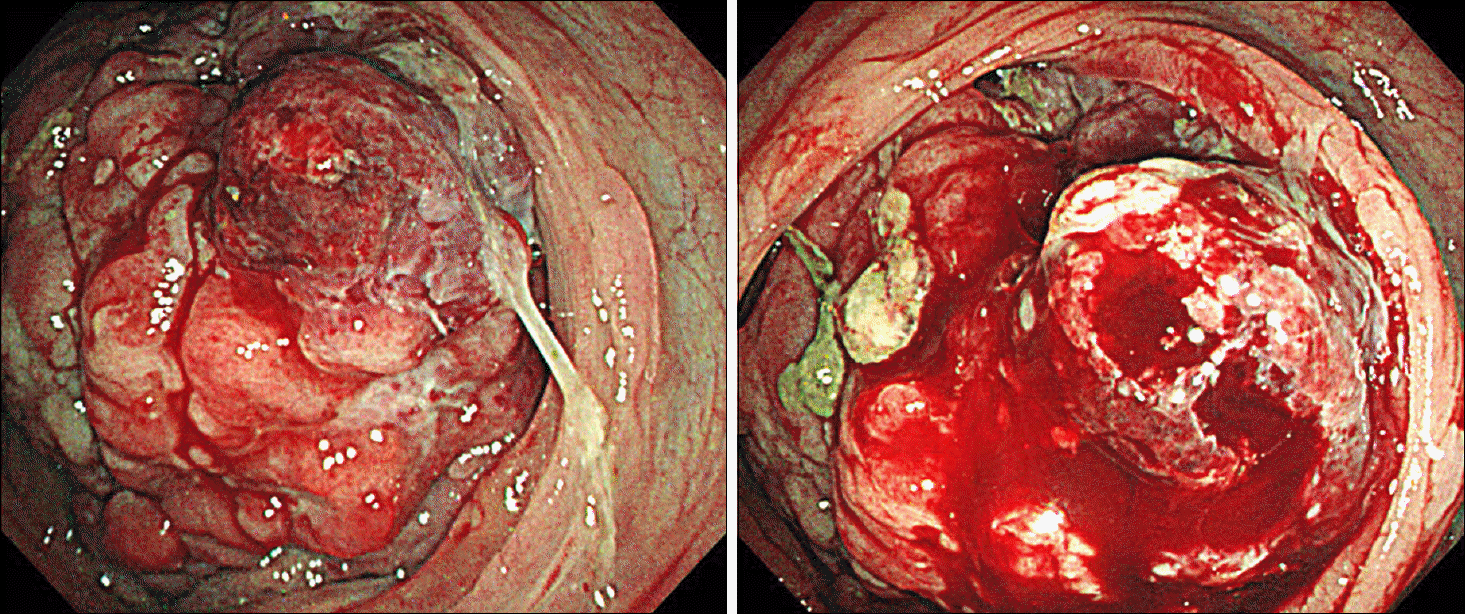Abstract
Myeloid sarcoma (MS) is an extramedullary involvement of immature myeloid proliferation. An isolated MS is defined as a myeloblastic tumor when it arises without any concomitant circulating disease. A diagnosis of MS is established using pathologic features including infiltration of myeloblasts and strong myeloperoxidase expression with negative cytokeratin immunohistochemical staining. We report a rare case of colonic MS without any peripheral blood abnormality. If the affected patient were left untreated, the MS could evolve into acute myeloid leukemia (AML) within one year. Several studies recommend the same regimens of chemotherapy as used for circulating AML to treat isolated MS. We focused on the diagnosis of MS in this study. The correct diagnosis of MS is important for adequate treatment. In conclusion, MS should be considered in the differential diagnosis of intestinal tumor.
Go to : 
References
1. Avni B, Koren-Michowitz M. Myeloid sarcoma: current approach and therapeutic options. Ther Adv Hematol. 2011; 2:309–316.

2. Harris AC, Kitko CL, Couriel DR, et al. Extramedullary relapse of acute myeloid leukemia following allogeneic hematopoietic stem cell transplantation: incidence, risk factors and outcomes. Haematologica. 2013; 98:179–184.

3. Pileri SA, Ascani S, Cox MC, et al. Myeloid sarcoma: clinicopathologic, phenotypic and cytogenetic analysis of 92 adult patients. Leukemia. 2007; 21:340–350.

4. Yamauchi K, Yasuda M. Comparison in treatments of non-leukemic granulocytic sarcoma: report of two cases and a review of 72 cases in the literature. Cancer. 2002; 94:1739–1746.
5. Movassaghian M, Brunner AM, Blonquist TM, et al. Presentation and outcomes among patients with isolated myeloid sarcoma: a Surveillance, Epidemiology, and End Results database analysis. Leuk Lymphoma. 2015; 56:1698–1703.

6. Neiman RS, Barcos M, Berard C, et al. Granulocytic sarcoma: a clinicopathologic study of 61 biopsied cases. Cancer. 1981; 48:1426–1437.

7. Antic D, Elezovic I, Milic N, et al. Is there a "gold" standard treatment for patients with isolated myeloid sarcoma? Biomed Pharmacother. 2013; 67:72–77.

8. Yilmaz AF, Saydam G, Sahin F, Baran Y. Granulocytic sarcoma: a systematic review. Am J Blood Res. 2013; 3:265–270.
9. Huang XL, Tao J, Li JZ, et al. Gastric myeloid sarcoma without acute myeloblastic leukemia. World J Gastroenterol. 2015; 21:2242–2248.

10. Ghafoor T, Zaidi A, Al Nassir I. Granulocytic sarcoma of the small intestine: an unusual presentation of acute myelogenous leukaemia. J Pak Med Assoc. 2010; 60:133–135.
Go to : 




 PDF
PDF ePub
ePub Citation
Citation Print
Print





 XML Download
XML Download